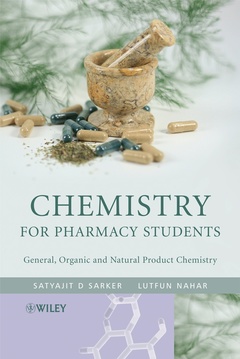Description
Chemistry for pharmacy students: General organic & natural products chemistry
General, Organic and Natural Product Chemistry
Authors: Sarker Professor Satyajit D., Nahar Lutfun
Language: English
Subject for Chemistry for pharmacy students: General organic &...:
Keywords
students; pharmaceutical; areas; pharmacy; introduction; key; chemistry; studentfriendly; book; comprehensive overview; general; various; enhance; drug; student; products chemistry; natural; molecules; relation; clear sections; six; life; aspects
Approximative price 76.07 €
Subject to availability at the publisher.
Add to cartPublication date: 08-2007
432 p. · 16.9x24.5 cm · Paperback
Approximative price 177.25 €
Subject to availability at the publisher.
Add to cartPublication date: 08-2007
432 p. · 17.4x25.1 cm · Hardback
Description
/li>Contents
/li>Biography
/li>
Dr Satyajit Sarke BPharm (Hons) MPharm PhD FHEA. Reader in Pharmacy; Course Director, BSc (Hons) Pharmacology; Chair, MPharm Course Planning Committee; Chair, MSc Pharmaceutical Sciences Course Planning Committee; Owner and moderator: www.jiscmail.ac.uk/natprodis and www.jiscmail.ac.uk/pharmed; School of Biomedical Sciences, University of Ulster at Coleraine, Northern Ireland, UK.
Dr Lutfun Nahar. School of Biomedical Sciences, University of Ulster at Coleraine, Northern Ireland, UK.

